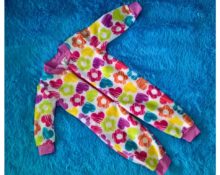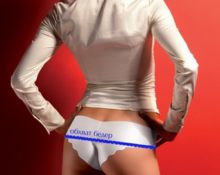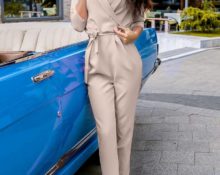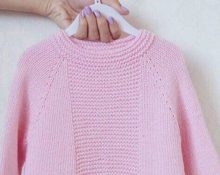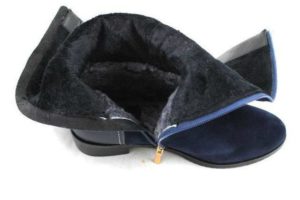 In recent years, you can often hear that boots with Euro fur are offered for purchase in stores or on online platforms. At the same time, a seller at the market without shyness demonstrates a pair of shoes for winter with ordinary faux fur. Is this really so: is Eurofur a synthetic fiber with an imitation of fur pile or some other animal? Let's figure out what material it is and why it was invented.
In recent years, you can often hear that boots with Euro fur are offered for purchase in stores or on online platforms. At the same time, a seller at the market without shyness demonstrates a pair of shoes for winter with ordinary faux fur. Is this really so: is Eurofur a synthetic fiber with an imitation of fur pile or some other animal? Let's figure out what material it is and why it was invented.
Eurofur - what is it?
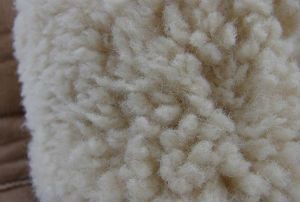 In fact, this is not the skin of any animal, it is a way to insulate shoes. With it, the foot in a boot up to the ankle is as if in a fur sock, and then a fabric lining is placed up to the very top.
In fact, this is not the skin of any animal, it is a way to insulate shoes. With it, the foot in a boot up to the ankle is as if in a fur sock, and then a fabric lining is placed up to the very top.
Eurofur is not a material, but a method of insulation, in which the lower part of the leg - foot, ankle - is warmed by fur, and on the ankle the nature of the insulation changes to a fabric lining - flannel or fleece.
Is it warm?
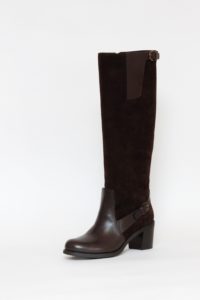 Cold weather is ahead, and therefore a natural question arises about whether it is warm in such boots and at what temperature the foot will feel comfortable. Natural materials act as insulation for the lower part: sheepskin or sheepskin. Above there is insulation with soft fleece. To keep warm in winter, it’s enough to keep your feet warm.
Cold weather is ahead, and therefore a natural question arises about whether it is warm in such boots and at what temperature the foot will feel comfortable. Natural materials act as insulation for the lower part: sheepskin or sheepskin. Above there is insulation with soft fleece. To keep warm in winter, it’s enough to keep your feet warm.
The upper part of the boot will maintain the temperature at which the shoes were fastened indoors. With active movement, for example, walking, such shoes will keep you warm even in frosty winters of up to 20 degrees. But if on the street the thermometer drops significantly lower, then you will need shoes that provide warmth up to the knee: boots with natural fur, felt boots, high boots.
What weather is it designed for?
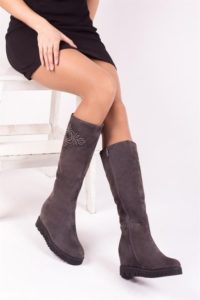 The foot below is insulated with natural fur, which means these are not demi-season shoes. Boots with Eurofur are sold as a lightweight winter option and are designed for use in different weather conditions.
The foot below is insulated with natural fur, which means these are not demi-season shoes. Boots with Eurofur are sold as a lightweight winter option and are designed for use in different weather conditions.
Eurofur can be worn both in winter and during the off-season, which is characterized by temperature changes. These shoes are great for mild winters.
Taking into account the fact that in recent years in November and December the temperatures have been quite high for these months, Eurofur will be appropriate for half of the winter time.
If it has not yet become warm, but it is no longer very cold - in early spring or late autumn there is no point in steaming in heavy boots with natural fur; a lightweight option with lightweight insulation will come in handy.
Shoes with such insulation will help out if there was frost at night and the morning remains cold, but by lunchtime it thaws.
In the European part of Russia, many women choose this fur, because in mild frosts, up to 15 degrees, they warm their feet very well, and if you move in a car, you are not afraid of the cold and stronger.
Pros and cons of Eurofur in boots
Based on the foregoing, we conclude that Eurofur is suitable for many situations and has undoubted positive aspects:
 There is no voluminous fur in the upper part of the boot; here it is replaced with thinner fleece or flannel. Accordingly, the volume does not increase, and the legs remain slender;
There is no voluminous fur in the upper part of the boot; here it is replaced with thinner fleece or flannel. Accordingly, the volume does not increase, and the legs remain slender;- shoes are lightweight, since fleece is much lighter than natural fur;
- thin lining makes fastening easy;
- the presence of fur only in the lower half of the boot significantly reduces the cost compared to shoes consisting entirely of natural materials.
Despite all the positive aspects, there are also some negative aspects:
- such fur does not provide sufficient protection from severe frosts;
- Often, in shoes called “Eurofur”, unscrupulous manufacturers replace natural materials with synthetic analogues that are externally difficult to distinguish from proper fur and leather.
- Having considered all the pros and cons of shoes with Euro fur, we can conclude that such options are in demand in the women's wardrobe.
Materials Commonly Used
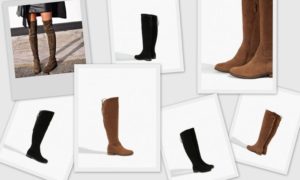 To insulate the lower part of the boot, from the sole to the ankle, natural sheepskin or sheepskin is used. The rest of the part, located above, has a lining layer of warm fleece, flannel or flannel.
To insulate the lower part of the boot, from the sole to the ankle, natural sheepskin or sheepskin is used. The rest of the part, located above, has a lining layer of warm fleece, flannel or flannel.
The insulation may have a small pile layer, which improves the thermal insulation properties of the fabric sections.And only in some models the upper part of the boot is lined with natural materials: thin sheared fur or wool.
What is added to Eurofur in boots?
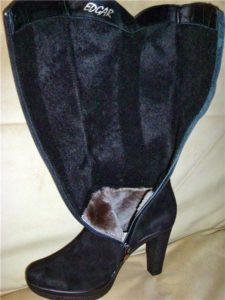 Sometimes, instead of Eurofur, you can hear the term Eurowool. This is also one of the ways to insulate a boot, only the natural fur in the shoes is replaced with high-quality sheep wool, processed using a special technology.
Sometimes, instead of Eurofur, you can hear the term Eurowool. This is also one of the ways to insulate a boot, only the natural fur in the shoes is replaced with high-quality sheep wool, processed using a special technology.
The name euro determines that this product was created and is in demand in the European Union. In our country, boots with such insulation have not yet become widespread. But in Sweden, Denmark, Germany and other countries they have long appreciated this invention and wear similar models with success.
To create Eurowool, raw materials are taken from special breeds of sheep. Their fur is denser than usual. It practically does not fall off, and the processing technology used ensures thermal stabilization throughout the entire period of operation.
As a result, the resulting material is resistant to abrasion and creasing, and will also easily ensure the stability of the thermal insulation of shoes during any period of use. Feet in such shoes do not sweat. This is guaranteed by good ventilation and lower moisture holding capacity compared to natural fur.


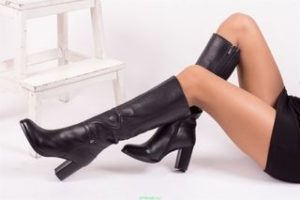 There is no voluminous fur in the upper part of the boot; here it is replaced with thinner fleece or flannel. Accordingly, the volume does not increase, and the legs remain slender;
There is no voluminous fur in the upper part of the boot; here it is replaced with thinner fleece or flannel. Accordingly, the volume does not increase, and the legs remain slender; 0
0